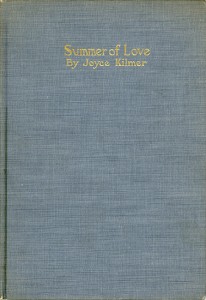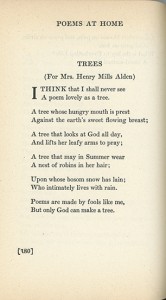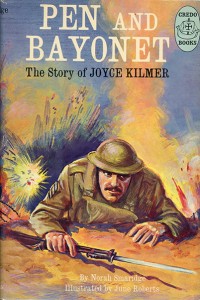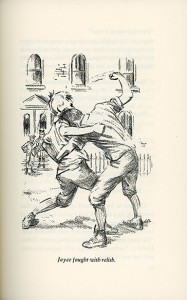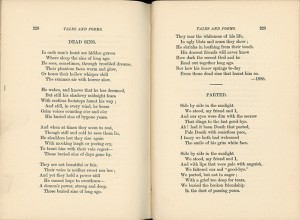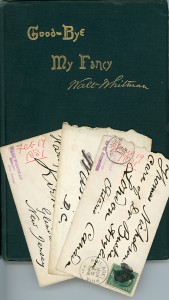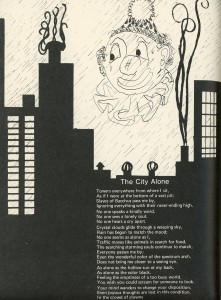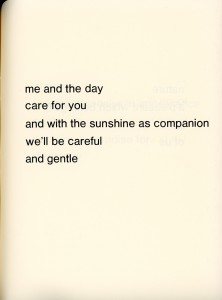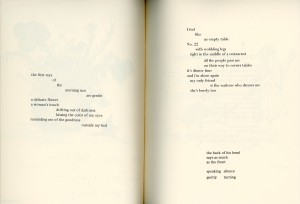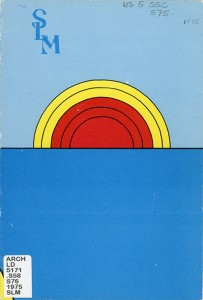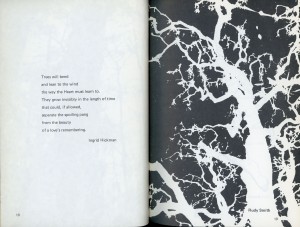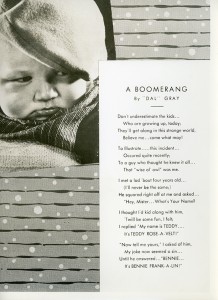A North Jersey Poet
Kilmer, Joyce. Summer of Love. New York: Baker & Taylor, 1911.
Joyce Kilmer was born in New Brunswick, New Jersey in 1886. In 1911 he published his first book of poetry, Summer of Love, at the age of 25. He published three more books of poetry and essays before enlisting in the National Guard in 1917 to serve in World War I. One of these volumes included “Trees,” the poem for which Kilmer is most famous, with its instantly recognizable opening lines, “I think that I shall never see / A poem as lovely as a tree.” Kilmer’s time serving in the National Guard was short. He served for just over a year before being killed at the age of 31 during the Second Battle of Marne in France. Kilmer’s influence and legacy, however, were not lost: two more volumes of poetry and essays were published after his death, and several New Jersey schools are named in his honor. Stockton’s Special Collections hold not only several original printings of Kilmer’s work, but Pen and Bayonet, a biography published about his life in 1962.
Smaridge, Norah. Pen and Bayonet: The Story of Joyce Kilmer. New York: Hawthorne, 1962.
*
Youthful Potential
Wray, Angie W. Tales and Poems. New Brunswick: J. Heidingsfeld, 1890.
Angie W. Wray published a book of lovely, intelligent, and enticingly dark poems and stories in 1890. While this fact may not at first seem particularly unique or interesting, it may change your mind to know that Wray wrote and had her first book Tales and Poems published before the age of 20. Angie Wray was a high school student in New Brunswick, New Jersey. Before graduating in 1888, she composed dozens of poems in addition to a few novellas, some of which were included in her first publication. Poems such as “Haunted” and “Dead Sins” give insight into the mind of poet who seems much older than the then teenaged Wray. Little is known about Wray’s life or how such a young woman accomplished what more seasoned poets often fail to do. However, if you are interested in looking into the mind of this impressive young poet, a copy of her book is available in Stockton’s Special Collections.
*
After Leaves of Grass
Walt Whitman is famed for publishing one collection of poems, Leaves of Grass. But in reality he published many different collections entitled Leaves of Grass. In succeeding versions he replaced some poems with new poems, so when scholars discuss Whitman’s Leaves of Grass we need to ask, “Which one?” Yet Whitman did publish other volumes of poetry. Good-bye My Fancy is the second “addition” to Leaves of Grass. Published in 1891 its thirty-one poems are often rejected as “the mere waifs and strays of a career whose poetic potential had been fairly fulfilled by the publication of the 1881 Leaves of Grass,” yet many of its poems hold charm and poetic merit. Adding interest to this particular volume are the envelopes, secured to the title page with a paper clip, that at one time contained correspondence between Whitman and friends.
Walt Whitman. Good-Bye My Fancy. 2nd Annex to Leaves of Grass. Philadelphia: David McKay, 1891.
*
The Origins of Stockpot
Reading Crying Voices and Unheard Sounds is a good way to examine the mindset of Stockton students in 1973. Edited by Ed Price and Dan McMahon, it was the first literary magazine at Stockton. There aren’t even page numbers for reference. Much of the writing and the graphics, like the example you see above, are juxtapositions of love and loneliness as well as death and blackness.
The Stockton State College Literary Magazine of 1975 was the first Stockton publication for which Pulitzer Prize winner Stephen Dunn—Distinguished Profes-sor Emeritus of Creative Writing—served as literary advisor. This magazine is, in many ways, tamer than Crying Voices and Unheard Sounds. For example, most of the radical experimental forms of poetry are gone. The content focuses on more concrete experiences as opposed to poems about abstract concepts, such as love.
The first issue of Stockpot also claims Stephen Dunn as literary advisor, with Peter Murphy as editor. Marked by the striking font and definition of the front cover, this magazine continues in the direction established by Stockton State College Literary Magazine. Celebrating its 40th year in 2014, Stockpot remains true to its origins and features the brilliant artwork and writings of Stockton students and alumni.
McMahon, Dan and Ed Price, eds. Crying Voices and Unheard Sounds. Pomona: Stockton College, NJ, 1973.
Neiman, Arthur L., ed. Stockton State College Literary Magazine. Pomona: Stockton College, NJ, 1975.
Murphy, Peter E., ed. Stockpot. Pomona: Stockton State College, NJ, 1975.
*
Dal Gray is/was a local poet who took pictures around the Gloucester City / Glassboro area to use as inspiration for his poems. Not much is know about him. His style is semi beatnik. Special Collections has a series of his “photo poems” where the poems are superimposed over large photographic images (about 12 inches by 18); they look as though they date from the 1970s or 1980s. It is interesting material.
